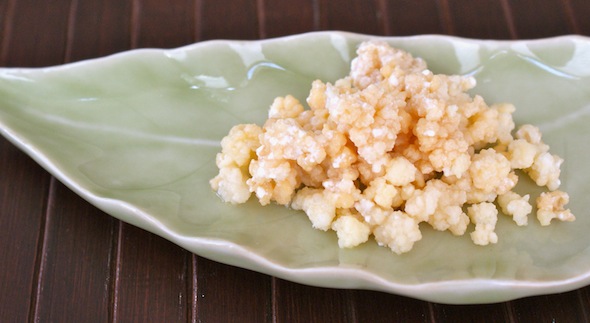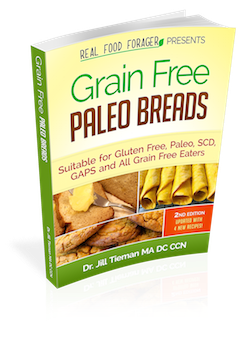This has to be one of the easiest ways to get high quality probiotics into your diet. Start with the very best milk you can get; preferably raw milk from well kept pastured cows. If you cannot get that milk, try to get organic, unhomogenized, full fat milk from grassfed cows. I was able to get this milk at a large health food supermarket in my area. Once you have the best milk you can get, the grains do all the work! Don’t be confused! Milk kefir grains are not really grains at all. Since they look kind of like tiny cauliflowers, I’m not sure why they are called grains. Whatever — they are colonies of various strains of beneficial bacteria and yeast. They are alive and they are your friends!
Beneficial Bacteria and Yeast
Kefir contains many other nutritious elements in addition to beneficial bacteria and yeast. It is full of vitamins, minerals and essential amino acids. The proteins are partially digested during the fermentation process which makes it easy for the body to use. Milk kefir contains significant amounts of tryptophan, the amino acid that promotes relaxation and sleep, making it a good choice for an evening snack. It is also rich in vitamin B-12, vitamin K and biotin.
Kefir is one of the oldest cultured drinks in written history, originating in the Caucasian Mountains. There is a legend that Mohammed gave kefir grains to the Orthodox people and taught them how to make kefir. The ‘Grains of the Prophet’ were fiercely guarded because it was believed that the people would lose their strength if the grains were given away and the secret of how to use them became public. The grains were part of the family’s wealth and passed down through the generations.
A Magical Drink
Kefir was a well kept secret until it was discovered to be useful to treat tuberculosis and intestinal and stomach disorders. Russian doctors began to study it and they published research at the end of the nineteenth century.
Traditionally kefir was made with cow or goat milk in a sack made from the hide of an animal. It was hung in the sun during the day and inside at night. People passing by the hanging sack were expected to prod the sack in order to mix the contents. The kefir was removed and new milk was added so it was continuously fermenting.
I guess that explains why traditional Russian people are blessed with health and longevity.
Having a balanced gut flora is the key to good health. Put fermented foods back into your daily diet and your “good little friends” will thank you and protect you.
Milk Kefir
Ingredients
- One quart organic, unhomogenized, full fat milk from grassfed cows or raw milk or the best that is available to you
- 1 tablespoon milk kefir grains (where to buy kefir grains and culture starters)
Equipment
- quart mason jar with lid
Instructions
- Pour the milk into the quart jar leaving an inch from the top for expansion
- Place the kefir grains in the jar
- Close the jar
- Put it in a quiet place that is 68 – 72 degrees F for 24 hours
- Check after 24 hours
- If it is tart it is ready — if still sweet leave it our another 12 -24 hours
- If our house is warm it will go faster
- You will know when it is ready













